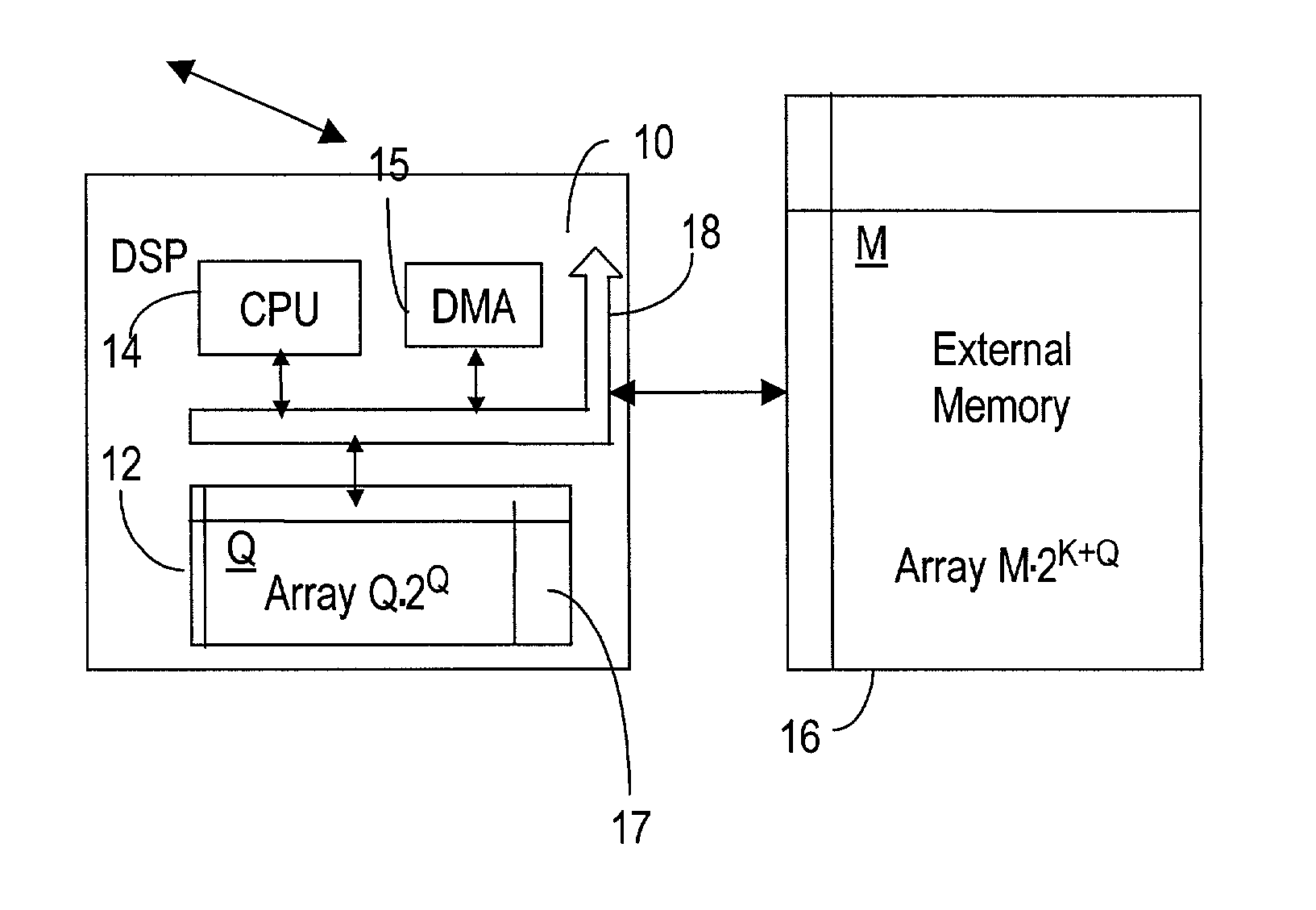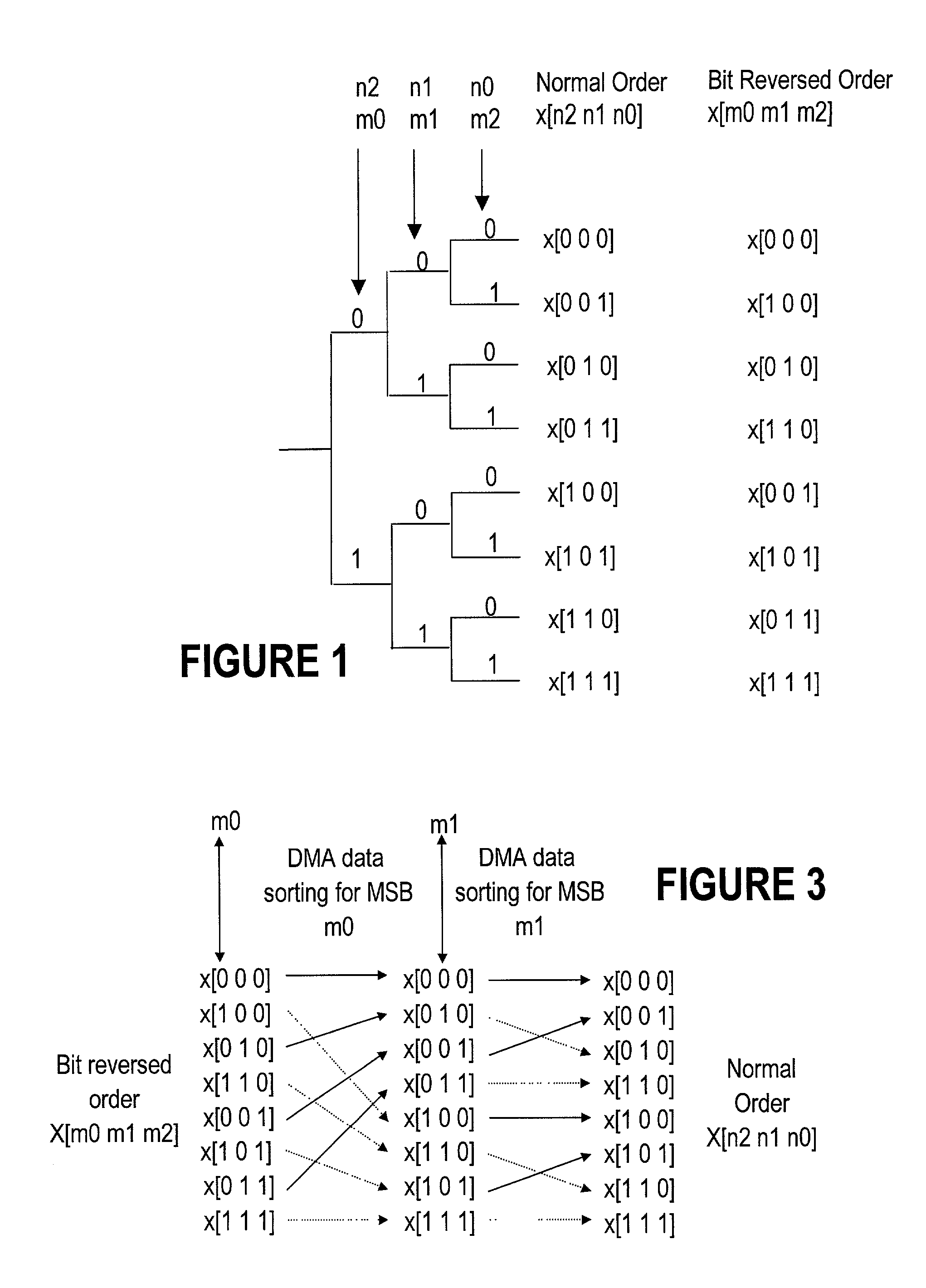Real-time method for bit-reversal of large size arrays
a real-time method and array technology, applied in the field of information transfer systems, can solve the problems of large overhead compared to available hardware, time-consuming bit reversal, etc., and achieve the effect of meeting the real-time requirement and reducing the overhead of hardwar
- Summary
- Abstract
- Description
- Claims
- Application Information
AI Technical Summary
Problems solved by technology
Method used
Image
Examples
Embodiment Construction
[0021] Definition of some terms is provided next in conjunction with the above-referenced bit-reversal method for a better understanding of the present invention.
[0022] Index "n" is used for the order of the bits in the normal-ordered array, where "n" takes value between 0 and (N-1). Index "m" is used for the order of the bits in the reverse-ordered array, and "m" takes value between 0 and (M-1), where N=M. The size of the array is 2.sup.M (number of rows).times.M (number of columns). The method according to the invention requires use of at least an array of the size 2.sup.Q (number of rows).times.Q (number of columns) of internal memory, where Q<M. Thus, for a given array to be reversed, Q can be selected according to availability of the internal memory, as it will be seen later.
[0023] A bit-reversal routine is an addressing scheme which operates in an auto-increment address mode, except that instead of incrementing the value of the address register, the bits in the address are rev...
PUM
 Login to View More
Login to View More Abstract
Description
Claims
Application Information
 Login to View More
Login to View More - R&D
- Intellectual Property
- Life Sciences
- Materials
- Tech Scout
- Unparalleled Data Quality
- Higher Quality Content
- 60% Fewer Hallucinations
Browse by: Latest US Patents, China's latest patents, Technical Efficacy Thesaurus, Application Domain, Technology Topic, Popular Technical Reports.
© 2025 PatSnap. All rights reserved.Legal|Privacy policy|Modern Slavery Act Transparency Statement|Sitemap|About US| Contact US: help@patsnap.com



